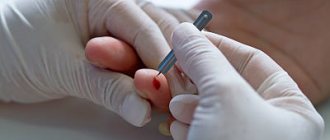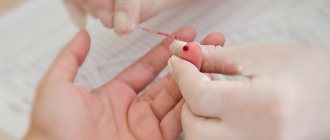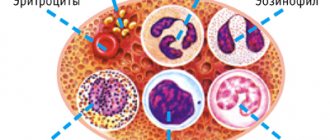If you stop a random passerby on the street (although this is not so easy to do now) and ask what his blood type is, he most likely will not be able to answer this question. Unless you were in the hospital, had a special test, or have a good memory. But knowing your blood type in an emergency can save a life: if you tell the doctor your blood type in time, he will be able to quickly select the appropriate option for transfusion. Moreover, some groups can be mixed with each other, while others categorically prohibit this. What is a blood type, and what determines the transfusion of different groups?
There are 4 recognized blood groups in the world
- 5.1 What blood type will the child have?
Human blood groups
For a hundred years now, one of the most important mysteries of our circulatory system has remained without a solution. We never knew why we have different blood types. However, the fact that groups really exist is beyond doubt - the groups are determined by special molecules (antigens) located on the surface of blood cells, these are the “balls” that blood consists of.
It is the antigens that determine the blood type , and if blood with a different type of antigen enters the human body, it will be rejected. If the antigens are different, then the body will recognize foreign red blood cells and begin to attack them. That is why it is so important to take into account group compatibility when giving blood transfusions. However, why is blood divided into types? Wouldn't it be simpler to have one universal group?
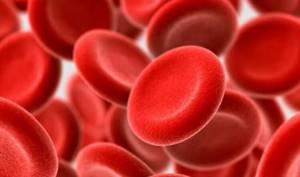
Blood is made up of these “pills” - red blood cells.
Of course it would be easier. But while scientists cannot answer the question of why many people have different blood types, it is impossible to create a universal group. Last year, scientists from the National Defense Medical College tested the first universal artificial blood on 10 rabbits. All animals were injured and suffered severe blood loss. During the study, 6 out of 10 rabbits survived and were transfused with universal artificial blood. Survival among rabbits transfused with normal blood from their group was exactly the same. At the same time, experts noted that no side effects from the use of artificial blood were found. But this is not enough to talk about the creation of some kind of “universal” blood.
So for now we are working the old fashioned way with different blood groups. How are they determined?
Inheritance of traits
For centuries, parents have only wondered what their child would be like. Today there is an opportunity to look into beauty far away. Thanks to ultrasound, you can find out the gender and some features of the anatomy and physiology of the baby.
Genetics allows us to determine the likely color of eyes and hair, and even whether a child has an ear for music. All these characteristics are inherited according to Mendelian laws and are divided into dominant and recessive. Brown eye color, hair with small curls and even the ability to curl the tongue are signs of dominance. Most likely, the child will inherit them.
Unfortunately, dominant signs also include a tendency to early baldness and graying, myopia and gaps between the front teeth.
Gray and blue eyes, straight hair, fair skin, and a mediocre ear for music are considered recessive. These signs are less likely to occur.
How to determine blood type
Current methods for establishing blood type are far from perfect. All of them involve delivery of samples to the laboratory and take at least 20 minutes, which can be very critical in certain conditions. Three years ago, China developed a rapid test that can determine your blood type in just 30 seconds, even in the field, but it is not yet widely used in medicine because it has a strong error.
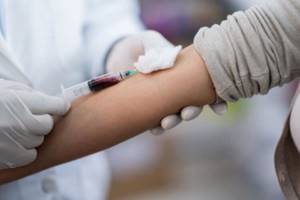
To determine the group, blood is taken from a vein
The speed of blood group tests is one of the main problems. If a person gets into an accident, if an accident happens to him, his blood type will need to be determined in order to save his life. If there is no data on the victim, you will have to wait another 20 minutes, and this is provided that the laboratory is at hand.
Therefore, doctors strongly recommend either remembering your blood type (this test is at least done in childhood, in hospitals, and even at the army draft board), or writing it down. There is a “Health” application on your iPhone, where you can enter information about yourself, including height, weight and blood type. In case you find yourself unconscious in the hospital.

“Medical card” section in the “Health” application
Today, 35 blood group determination systems are used in the world. The most widespread, including in Russia, is the ABO system. According to it, blood is divided into four groups: A, B, O and AB . In Russia, for ease of use and memorization, they are assigned numbers - I, II, III and IV . Between themselves, blood groups differ in the content of special proteins in the blood plasma and red blood cells. These proteins are not always compatible with each other, and if incompatible proteins are combined, they can stick together red blood cells and destroy them. blood transfusion rules exist to only transfuse blood with a compatible type of protein.
To determine the blood type, it is mixed with a reagent containing known antibodies. Three drops of human blood are applied to the base: anti-A reagent is added to the first drop, anti-B reagent is added to another drop, and anti-D reagent is added to the third drop. The first two drops are used to determine the blood type, and the third is used to determine the Rh factor. If the red blood cells did not stick together during the experiment, it means that the person’s blood type matches the type of anti-reagent that was added to it. For example, if in a drop to which the anti-A reagent was added, the blood particles do not stick together, then the person has blood type A (II).
If you are interested in science and technology news, subscribe to us on Google News and Yandex.Zen so as not to miss new materials!
1 blood group
First (I) blood group, also known as group O. This is the most common blood group , it is found in 42% of the population. Its peculiarity is that there is no antigen A or antigen B on the surface of blood cells (erythrocytes).
The problem with the first blood group is that it contains antibodies that fight both antigens A and antigens B. Therefore, a person with group I cannot be transfused with blood of any other group except the first.
Since there are no antigens in group I, for a long time it was believed that a person with blood type I is a “universal donor” - they say that it will fit into any group and “adapt” to antigens in a new place. Now medicine has abandoned this concept, since cases have been identified where organisms with a different blood group still rejected group I. Therefore, transfusions are performed almost exclusively “group to group”, i.e. the donor (from whom the transfusion is given) must have the same blood type as the recipient (to whom it is transfused).
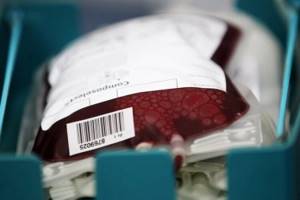
A person with blood type I was previously considered a “universal donor”
2 blood group
The second (II) blood group, also known as group A, means that only antigen A is found on the surface of red blood cells. This is the second most common blood group, 37% of the population has it. If you have blood type A, then you cannot, for example, be transfused with blood of group B (third group), because in this case there are antibodies in your blood that fight against B antigens.
3 blood group
The third (III) blood group is group B, which is the opposite of the second group, since only B antigens are present on the blood cells. It is present in 13% of people. Accordingly, if you transfuse type A antigens to a person with such a group, they will be rejected by the body.
4 blood group
The fourth (IV) blood group in the international classification is called group AB. This means that there are both A and B antigens in the blood. It was believed that if a person has such a group, he can be transfused with blood of any group. Due to the presence of both antigens, blood group IV does not have a protein that glues red blood cells together - this is the main feature of this group. Therefore, the red blood cells of a person receiving a transfusion do not repel the fourth blood group. And a carrier of blood group AB can be called a universal recipient. In fact, doctors try to rarely resort to this and transfuse only the same blood type.
The problem is that the fourth blood group is the rarest, only 8% of the population has it. And doctors have to resort to transfusions of other blood types.
In fact, for the fourth group there is nothing critical in this - the main thing is to transfuse blood with the same Rh factor.
It is believed that blood type can also influence a person’s character.

Visual difference between blood groups
Table
According to the creators of this method, you can easily find out the sex of a child by blood by comparing the groups of parents in the following table.
Table for determining the sex of a child by blood type
How to calculate?
To determine the sex of your child based on the blood type of the parents, you need to find out the indicators of the parents and find them in the table. The sex of the fetus is located at the intersection of the rows and columns of the table. For example, if the wife has the third (B) group, and the husband has the first (0) group, then the couple will have a daughter. And if both have the third group (B), then you can expect a male child. This may seem like a fairly simple way to determine the sex of the unborn child based on the blood type of the parents, but how reliable is it? Read on.
By Rh factor
According to this method, primary sexual characteristics are also influenced by rhesus, which is also indicated in the table for determining the sex of a pregnant child by blood type.
Table for determining the sex of a child by Rh blood factor
According to this table, it is also easy to find out the gender of the child by blood type by comparing the indicators of the partners. For example, if two parents have the same Rh, then they will only have daughters.
In addition to Rh and the AB0 group, there is another rather interesting method for determining the sex of a child by the blood of the parents. According to it, people's blood is renewed cyclically: in men - every 4 years, in women - every 3 years. And the gender of the spouse, who was “renewed” earlier, is passed on to the baby. For example, if the father’s was “renewed” this year, and the mother’s was three years ago, then the fetus will have male genitalia.
But the test for the gender of the child by blood renewal has a serious drawback: how to find out when this happened last time? Theoretically, the update time can be calculated by date of birth. For example, at the 21st year of life, a woman should undergo the 7th renewal, and a man at the 32nd year of life should undergo the 8th renewal. But this does not mean that the process must begin exactly on your birthday. Although this method of updating the blood of parents to calculate the sex of the unborn child also takes into account transfusions and blood loss, there is no scientific basis for this method.
Can the blood of mom and dad determine the sex of the unborn baby?
So how can you determine the sex of a child based on the blood of the parents and is it even possible to do this? If we are talking about the biological material of the mother, then the primary sexual characteristics of the fetus can be found out, but not with the help of any tables or online calculators. And the male group does not in any way affect the formation of genitalia in the embryo, so any advice and recommendations on how to determine the sex of a child by the blood of the parents have no basis. Why?
Let us remember what the primary sexual characteristics of a person depend on. They are laid at the moment of fusion of the egg and sperm during fertilization. The egg has only an X chromosome, which determines the female sex. The paternal reproductive cell can carry both a female and a male chromosome. If at the moment of fertilization the sex cells of the parents are connected to the X chromosome and the Y chromosome, then there will be a boy. Otherwise there will be a daughter.
How does the antigenic characteristics of blood cells affect this process? Obviously, none. Based on the groups of antigens of the father and mother, it is possible to determine only a similar indicator in the baby, and then with a statistical probability of 25, 50 and 100% according to the summary table.
The type of antigen on the red blood cells in the mother does not in any way determine the sex of the embryo. Therefore, the method of finding out the sex of a child by the blood type of the parents is pseudoscientific and can only serve as entertainment.
Following the logic of this test, all married couples should have either sons or daughters. Then why do families have children of different sexes, including twins? This is a rhetorical question that contains the answer to how to determine the sex of the unborn child by blood type. There is no evidence in official genetics that blood cell antigens have any effect on the embryo.
Another method for calculating the sex of a pregnant child - the parental blood renewal test - is also not scientifically substantiated. There is no medical evidence that red blood cells and plasma are renewed every 3-4 years. Moreover, the life span of an erythrocyte is only 120 days, regardless of the person’s gender.
Positive blood type
The Rh factor (Rh) can be negative or positive. Rh status depends on another antigen - D, which is located on the surface of red blood cells. If the D antigen is present on the surface of red blood cells, then the status is considered Rh positive, and if the D antigen is absent, then Rh negative.
If a person has a positive blood type (Rh+) and is given a negative blood type, the red blood cells may clump together. The result is lumps that get stuck in the vessels and interfere with blood circulation, which can lead to death. Therefore, when transfusing blood, it is necessary to know the blood type and its Rh factor with 100% accuracy.
taken from the donor has a body temperature , that is, about +37 °C. However, to maintain viability, it is cooled to a temperature below +10 °C, at which it can be transported. The storage temperature of blood is about +4 °C.
Systems approach
Each person's blood type is one of many combinations of antigens, which are about 30 substances located on the surface of red blood cells. In the 36 scientifically recognized blood group systems, scientists identify approximately 308 different antigens. Throughout their lives, people retain the blood type they received at birth. However, certain factors, such as malignancies, infections and autoimmune diseases, can change the status quo.
It is not necessary to know all the systems, since many have no practical significance and are rarely used in medicine:
- AVO system. Currently, it is the main one and is of great importance in blood transfusion and organ transplantation. Any child who has reached six months of age already has clinically significant A and/or B antigens in the serum. The second group (A) contains antibodies against the third (B) and vice versa, while the first (O) does not contain antigen A and B, but their antibodies are found in the serum.
- H-antigen is a precursor of the ABO system, which, regardless of the group, is present in all red blood cells. The exception is people with the Bombay phenomenon, they do not have this substance.
- Rh system. The second important classification, which consists of 50 specific antigens, but only 5 are significant. The Rh factor may or may not be present on the surface of a human red blood cell, so the blood is determined accordingly as Rh positive or negative.
- Kell system. It is determined by the immune antibody anti-K and is the third most important. It was first discovered in Mrs. Kellaher's serum, which is why it later received its name. Antibody K causes severe hemolytic reactions during transfusions, and also provokes blood diseases in the fetus and newborn.
Interestingly, hereditary predisposition to a pathology such as McLeod syndrome is closely related to blood type. Sometimes, antigens transmitted by parents affect susceptibility to infections, for example, developing resistance to certain types of malaria. It was found that groups II and IV are associated with an increased likelihood of myocardial infarction, thrombosis and ischemic strokes in their owners. With regard to malignant neoplasms, blood type A correlates with pancreatic cancer (if there is chronic hepatitis B), and type B with ovarian cancer.
Genetic calculation
So, what blood type a child will have depends on what he inherits from his father and mother, and it may differ from the parent’s. Control of this process is concentrated in one gene with three types of alleles that were derived from classical genetics: i, IA and IB. The designation “I” was given to isoagglutinogen (another term for antigen). At first glance, complex genetic circuits can be deciphered quite simply:
- allele IA gives type A;
- IB - type B;
- i - type O.
It is interesting that IA and IB dominate over i, therefore only those who received ii as a result of mixing genes have type O blood (group I). The combination looks like this:
- IA + IA or I A + i = Group II (A);
- IB + IB or IB + i = Group III (B);
- IA + IB = IV (AB).
| Blood type | O(I) | A (II) | B (III) | AB (IV) |
| O(I) | O | O or A | B or O | A or B |
| A (II) | A or O | A or O | AB or A, B, O | AB or A, B |
| B (III) | B or O | AB or O, A, B | B or O | AB or B, A |
| AB (IV) | A or B | AB or A, B | B, A or AB | AB or A, B |
If you create a genetic calculator taking into account genotypes, then in each combination you will get four variations. They represent the possible combinations obtained by mixing genes, when one allele is taken from each parent. Each variation has a chance of about 25%, but some are more common and it’s difficult to accurately calculate.
Negative blood type
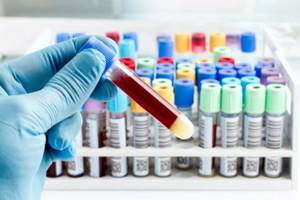
It is important to correctly determine the Rh factor of the blood
Negative blood type (Rh-) means the absence of D antigen on the surface of red blood cells. If a person is Rh negative, then when they come into contact with Rh positive blood (for example, through a blood transfusion), they may develop antibodies.
The compatibility of the blood type of the donor and the recipient is extremely important, otherwise the recipient may have dangerous reactions to the blood transfusion.
Cold blood can be transfused very slowly without adverse effects. However, if a large volume of blood is needed quickly, the blood is heated to body temperature +37 °C .
Parents' blood types
If blood cannot be mixed , then what to do in case of pregnancy? Doctors agree that it is not so important what group the mother and father of the child have , but their Rh factor is important. If the Rh factor of mom and dad is different, then there may be complications during pregnancy. For example, antibodies can cause pregnancy problems in a woman who is Rh negative if she is carrying a child who is Rh positive. Such patients are under special supervision by doctors.
This does not mean that the child will be born sick - there are many couples in the world with different Rh factors. Problems generally arise only at conception and if the mother is Rh negative .
What blood type will the child have?
Today, scientists have developed ways to accurately determine a child's blood type , as well as his Rh factor. You can find out this clearly using the table below, where O is the first blood group, A is the second, B is the third, AB is the fourth.
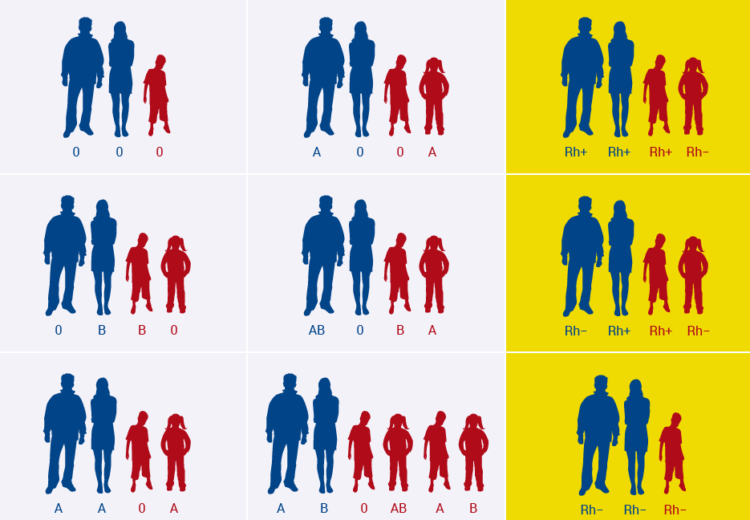
Dependence of the blood type and Rh factor of the child on the blood type and Rh factor of the parents
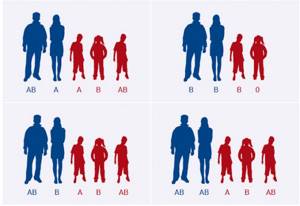
If one of the parents has blood type IV, children are born with different blood groups
The risk of blood group conflict between mother and unborn child is very high, in some cases it is less, and in others it is impossible. The Rh factor does not have any effect on the child's inheritance of a particular blood group. The gene itself responsible for the “+” Rh factor is dominant. That is why if the mother has a negative Rh factor, the risk of Rh conflict is very high.
Did you know that there is a way to cleanse the blood of cancer cells without drugs?
Hemolytic disease of the newborn
During pregnancy, Rh compatibility is of great importance. If a mother with a negative factor value develops a fetus that has inherited positive blood from the father, then at a later stage of gestation a Rh conflict often appears.
Some of the positive children's red blood cells can penetrate into the mother's bloodstream, causing her to develop special antibodies - agglutinins. They, breaking through the placental barrier, have a destructive effect on the baby’s red blood cells. When a woman is pregnant for the first time, the amount of antibodies produced in her body is usually small. Their concentration is insufficient to provoke serious pathologies.
And if this is not the first pregnancy (the mother is already sensitized), then the level of antibodies in the maternal blood increases. This happens both after an abortion and after a transfusion of blood that is inappropriate for the factor. Under such circumstances, a Rh positive infant may develop chronic hemolysis (destruction of red blood cells), resulting in severe anemia and accumulation of bilirubin in the blood. Often such babies are born prematurely - premature, and they have jaundice.
Since bilirubin (appearing after the breakdown of hemoglobin) is a dangerous toxic substance, brain pathology can develop at its high concentration. In the worst case, general swelling of the fetus occurs inside the womb. The baby may be stillborn or die without living even a few hours.

Baby in the womb
To save the baby, doctors can resort to completely replacing the child’s blood with donor material that matches the parameters.
Can your blood type change?
Blood type remains the same throughout a person's life. In theory, it can change during bone marrow surgery, but only if the patient’s bone marrow is completely dead and the donor has a different blood type. In practice, there are no such cases, and the doctor will first try to operate on a person using a donor organ who has the same blood type.
So we advise everyone to remember their blood type just in case, especially since it does not change throughout life. It’s better to write it down and tell your relatives in case of unforeseen situations.

